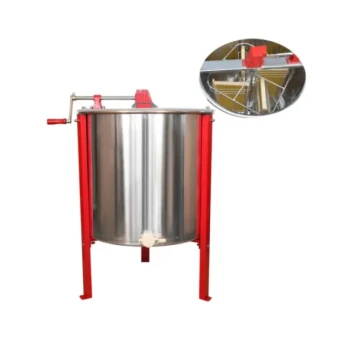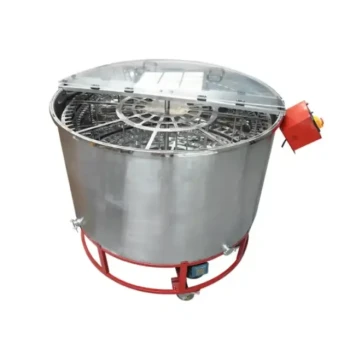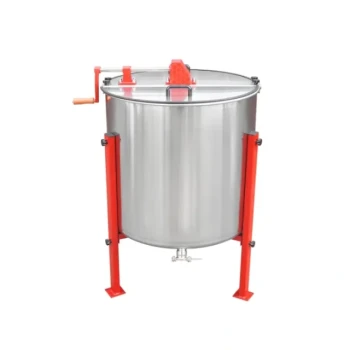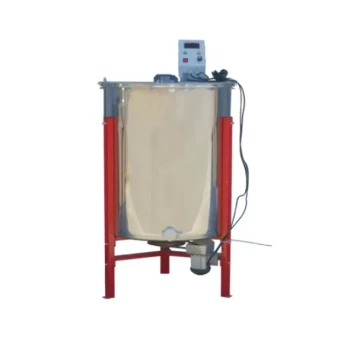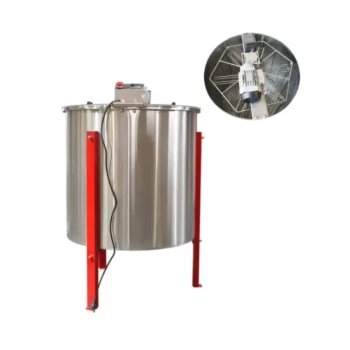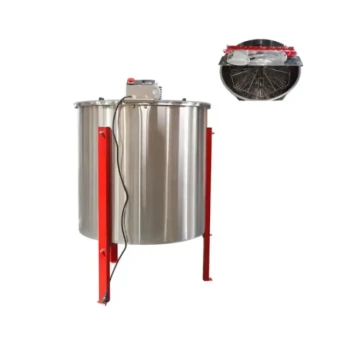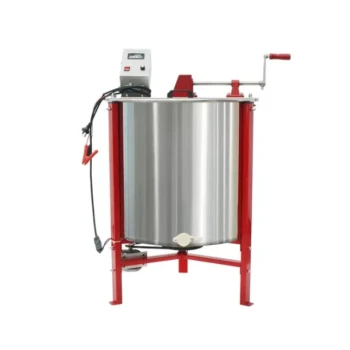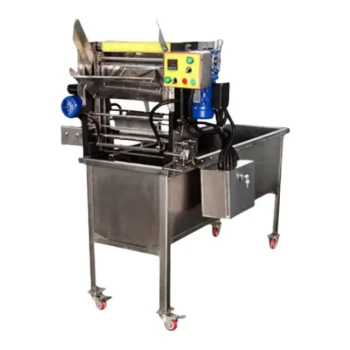Selecting the right honey extractor is a pivotal decision that impacts your apiary’s productivity, honey quality, and long-term operational efficiency. Whether you’re a hobbyist or managing a commercial operation, understanding the nuances of radial, tangential, and manual extractors—along with their alignment with hive size, budget, and scalability—ensures optimal honey extraction with minimal comb damage.
Mechanics and Workflow Differences: Radial vs. Tangential vs. Manual
Radial Extractors: Efficiency for High-Volume Operations
Radial extractors position frames vertically (like wheel spokes), allowing honey to be extracted from both sides of the comb simultaneously due to centrifugal force. This design:
- Reduces extraction time by ~30–50% compared to tangential models.
- Preserves comb integrity, minimizing the need for frame flipping.
- Ideal for medium-to-large apiaries (10+ hives) where speed and volume matter.
Example: Beekeepers processing 50+ frames per season report significantly less physical strain with radial systems.
Tangential Extractors: Precision for Smaller Batches
Tangential models hold frames with one honeycomb side facing outward, requiring manual flipping to extract honey from the reverse side. They offer:
- Better control over extraction for delicate or irregular combs.
- Lower upfront costs, making them accessible to small-scale beekeepers.
- Slower workflow (flipping frames adds ~20% more time per cycle).
Trade-off: While cheaper, tangential extractors may bottleneck productivity for apiaries exceeding 5–10 hives.
Manual Extractors: Hands-On Simplicity
Manual crank models are budget-friendly and portable, suited for:
- Hobbyists extracting
- Off-grid operations where electricity isn’t available.
- Educational settings where process transparency matters.
Limitation: Labor-intensive for frequent use; consider upgrading if scaling beyond a few hives.
Key Decision Factors: Hive Size, Extraction Volume, and Budget
1. Match Extractor Capacity to Hive Count
- 1–5 hives: Manual or small tangential extractors (2–4 frames).
- 5–20 hives: Motorized tangential or radial extractors (6+ frames).
- 20+ hives: Commercial radial extractors (20+ frames) with automated features.
2. Budget vs. Long-Term Value
- Manual: $100–$300 (low cost, high labor).
- Electric Tangential: $400–$1,200 (mid-range efficiency).
- Electric Radial: $1,500–$5,000 (high efficiency, ROI for commercial use).
Tip: Electric models save ~3–5 hours per extraction cycle, justifying higher costs for frequent use.
3. Comb Compatibility
- Radial extractors work best with uniform, wired frames.
- Tangential models accommodate cut-comb or irregular frames.
Long-Term Considerations: Scalability and Maintenance
Scalability
- Modular designs (e.g., stackable frames) allow gradual expansion.
- Motorized extractors can be retrofitted with higher-capacity drums.
Maintenance Demands
- Electric models: Require occasional belt/gear inspections (~$50–$200/year).
- Manual extractors: Need regular lubrication but fewer mechanical parts.
Proactive Care: Clean extractors after each use to prevent crystallization and corrosion.
Final Recommendation: Align Equipment with Your Beekeeping Goals
- Hobbyists: Start with manual/tangential extractors.
- Semi-commercial beekeepers: Invest in radial systems for efficiency.
- Commercial apiaries: Prioritize automated radial extractors with stainless-steel construction.
Ready to Optimize Your Honey Harvest? Explore HONESTBEE’s durable extractors—designed for beekeepers who value efficiency, comb preservation, and scalable solutions. Whether you’re supplying local markets or distributing equipment, our wholesale-focused inventory ensures you get professional-grade tools without the retail markup.
Contact HONESTBEE today to discuss bulk pricing for your apiary’s needs.
Visual Guide

Related Products
- Stainless Steel Manual 8 Frame Radial Honey Extractor Machine for Beehives
- 2 Frame Stainless Steel Manual Honey Spinner Extractor for Beekeeping
- HONESTBEE 3-Frame Manual Acrylic Honey Extractor
- HONESTBEE 4 Frame Manual Self Reversing Honey Extractor for Beekeeping
- HONESTBEE 72 Frame Industrial Electric Honey Extractor for Beekeeping
Related Articles
- How Honey Vacuum Thickeners Cut Costs Without Sacrificing Quality for Small Honey Producers
- How to Choose the Right Honey Extractor for Your Beekeeping Scale
- The Silent Collapse: Why Strong Beehives Die Over Winter
- Honey Flow vs. Langstroth Hives: Which System Delivers Better Efficiency and Bee Health?
- How to Harvest Honey Naturally: A Beekeeper’s Guide to Crush & Strain




